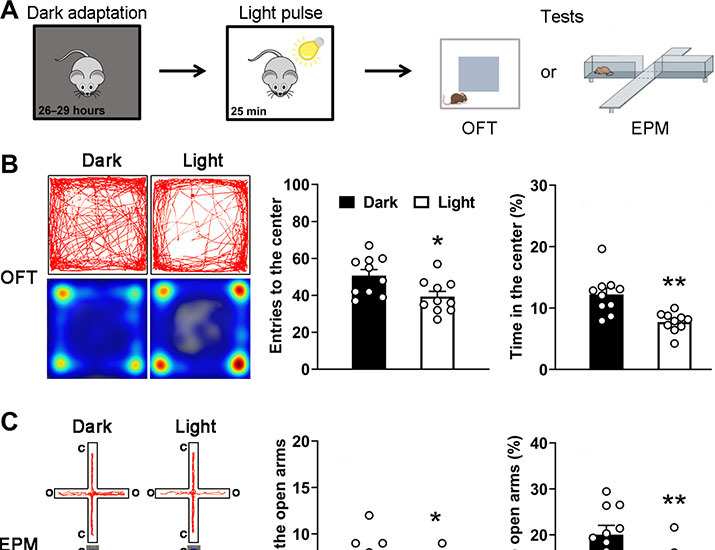Ge Wang:
ORCID: https://orcid.org/0000-0002-7198-134X
Role: ConceptualizationRole: Formal analysisRole: InvestigationRole: MethodologyRole:
Project administrationRole: SoftwareRole: ValidationRole: VisualizationRole: Writing
- original draftRole: Writing - review & editing
Yun-Feng Liu: Role: Formal analysisRole: InvestigationRole: Methodology
Zhe Yang: Role: InvestigationRole: Writing - review & editing
Chen-Xi Yu:
ORCID: https://orcid.org/0000-0003-3647-6310
Role: InvestigationRole: Resources
Qiuping Tong: Role: Formal analysisRole: InvestigationRole: Validation
Yu-Long Tang:
ORCID: https://orcid.org/0000-0001-8047-6751
Role: InvestigationRole: MethodologyRole: ResourcesRole: ValidationRole: Writing -
review & editing
Yu-Qi Shao: Role: Investigation
Li-Qin Wang: Role: ConceptualizationRole: Data curationRole: Formal analysisRole: Funding acquisitionRole:
InvestigationRole: MethodologyRole: Project administrationRole: ResourcesRole: SupervisionRole:
ValidationRole: VisualizationRole: Writing - original draftRole: Writing - review
& editing
Xun Xu: Role: Formal analysisRole: Investigation
Hong Cao:
ORCID: https://orcid.org/0000-0001-5048-3379
Role: Formal analysis
Yu-Qiu Zhang:
ORCID: https://orcid.org/0000-0001-6623-9629
Role: Formal analysisRole: Methodology
Yong-Mei Zhong:
ORCID: https://orcid.org/0000-0002-3382-2655
Role: Formal analysisRole: Funding acquisitionRole: Project administrationRole: VisualizationRole:
Writing - review & editing
Shi-Jun Weng:
ORCID: https://orcid.org/0000-0001-6550-892X
Role: ConceptualizationRole: Formal analysisRole: Funding acquisitionRole: Project
administrationRole: ValidationRole: Writing - original draftRole: Writing - review
& editing
Xiong-Li Yang:
ORCID: https://orcid.org/0000-0003-2128-9950
Role: ConceptualizationRole: Funding acquisitionRole: SupervisionRole: ValidationRole:
Writing - review & editing
Journal ID (nlm-ta): Sci Adv
Journal ID (iso-abbrev): Sci Adv
Journal ID (publisher-id): sciadv
Journal ID (hwp): advances
Title:
Science Advances
Publisher:
American Association for the Advancement of Science
ISSN
(Electronic):
2375-2548
Publication date Collection:
March
2023
Publication date
(Electronic, pub):
22
March
2023
Volume: 9
Issue: 12
Electronic Location Identifier: eadf4651
Affiliations
[
1
]State Key Laboratory of Medical Neurobiology and MOE Frontiers Center for Brain Science,
Institutes of Brain Science, Fudan University, Shanghai, China.
[
2
]Department of Ophthalmology, Shanghai General Hospital, National Clinical Research
Center for Eye Diseases, Shanghai Key Laboratory of Ocular Fundus Diseases, Shanghai
Engineering Center for Visual Science and Photomedicine, Shanghai Engineering Center
for Precise Diagnosis and Treatment of Eye Diseases, Shanghai, China.
Author notes
Author information
Article
Publisher ID:
adf4651
DOI: 10.1126/sciadv.adf4651
PMC ID: 10032603
PubMed ID: 36947616
SO-VID: f3a0121c-c8a6-4e77-87b7-8948f3b46583
Copyright © Copyright © 2023 The Authors, some rights reserved; exclusive licensee American Association
for the Advancement of Science. No claim to original U.S. Government Works. Distributed
under a Creative Commons Attribution NonCommercial License 4.0 (CC BY-NC).
License:
This is an open-access article distributed under the terms of the
Creative Commons Attribution-NonCommercial license, which permits use, distribution, and reproduction in any medium, so long as the
resultant use is
not for commercial advantage and provided the original work is properly cited.
Funded by:
FundRef http://dx.doi.org/10.13039/501100001809, National Natural Science Foundation of China;
Award ID: 81790640
Funded by:
FundRef http://dx.doi.org/10.13039/501100001809, National Natural Science Foundation of China;
Award ID: 82070993
Funded by:
FundRef http://dx.doi.org/10.13039/501100001809, National Natural Science Foundation of China;
Award ID: 31571072
Funded by:
FundRef http://dx.doi.org/10.13039/501100001809, National Natural Science Foundation of China;
Award ID: 32070989
Funded by:
FundRef http://dx.doi.org/10.13039/501100001809, National Natural Science Foundation of China;
Award ID: 31872766
Funded by:
FundRef http://dx.doi.org/10.13039/501100001809, National Natural Science Foundation of China;
Award ID: 31571075
Funded by:
Ministry of Science and Technology, Government of the People’s Republic of China;
Award ID: 2022ZD0208604
Funded by:
Ministry of Science and Technology, Government of the People’s Republic of China;
Award ID: 2022ZD0208605
Funded by:
Shanghai Municipal Science and Technology Major Project;
Award ID: 2018SHZDZX01
Funded by:
Shanghai Center for Brain Science and Brain-Inspired Technology;
Award ID: N.A.
Funded by:
FundRef http://dx.doi.org/10.13039/501100012151, Sanming Project of Medicine in Shenzhen;
Award ID: SZSM202011015
Funded by:
ZJLab;
Award ID: N.A.

